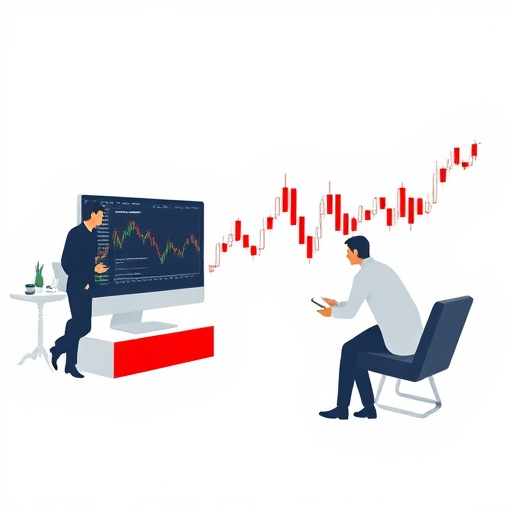Insider trading signals, based on non-public information from high-level sources, provide crucial insights for stock trading courses, helping investors understand company inner workings and market trends. Accessing institutional data through regulated disclosures and dedicated databases enables traders to analyze patterns, anticipate market movements, and make informed decisions in dynamic global markets, with special focus given to identifying insider activity and its impact on investment strategies within stock trading courses.
Uncover the secrets of institutional trading with our comprehensive guide on tracking insider activity. Learn how to decipher insider trading signals, access critical data, and analyze patterns to stay ahead in the market. From understanding complex strategies to leveraging advanced tools, this article equips investors with valuable insights from top stock trading courses. Discover effective methods for identifying insider activity, enhancing your investment decisions, and navigating the financial markets with confidence.
- Understanding Insider Trading Signals
- Accessing Institutional Trading Data
- Analyzing Trading Patterns and Trends
- Strategies for Identifying Insider Activity
Understanding Insider Trading Signals

Insider trading signals are a crucial aspect of understanding the market’s hidden dynamics. By analyzing insider activity, investors in stock trading courses can uncover valuable insights into companies’ inner workings and potential future movements. These signals come from high-level individuals within an organization who have access to non-public information that can impact share prices.
Institutional traders often follow these signals as they provide a glimpse into the thoughts and actions of the most informed market participants. Learning to interpret insider trading patterns requires a keen eye for detail and a deep understanding of regulatory requirements. Stock trading courses offer valuable resources for aspiring investors to master this art, enabling them to make more informed decisions in the complex world of stock markets.
Accessing Institutional Trading Data

Accessing institutional trading data is a vital step in understanding and tracking insider activity, especially for those interested in the intricate world of stock trading courses. This process involves navigating through vast amounts of financial information generated by large institutions like investment banks, mutual funds, and pension funds. These entities are required to disclose their trade activities under regulatory frameworks, providing a rich source of insights into market trends and investor behavior.
For aspiring traders or students enrolled in stock trading courses, accessing these data streams can be a game-changer. Many financial platforms offer institutional trading databases, allowing users to filter and analyze trades based on various criteria, such as company sector, investment type, or geographic region. By leveraging these resources, traders can identify patterns, gauge market sentiment, and make informed decisions, ultimately enhancing their strategies in the dynamic landscape of global stock markets.
Analyzing Trading Patterns and Trends

In the realm of stock trading, understanding institutional and insider activity is akin to deciphering a complex symphony. Analyzing trading patterns involves a meticulous examination of who’s buying, selling, and why. By delving into historical data, traders can identify trends—a crucial element for any aspiring investor. Stock trading courses often emphasize the importance of recognizing these patterns, as they offer valuable insights into market movements.
Trends may reveal institutional preferences for particular stocks or sectors, indicating potential opportunities or risks. For instance, consistent buying by large institutions over an extended period could signal a growing appetite for a specific industry, encouraging traders to explore investments in that sector. Conversely, sudden selling spikes might hint at insider knowledge of impending market shifts, prompting investors to exercise caution.
Strategies for Identifying Insider Activity

Identifying insider activity and its impact on stock prices is a complex yet fascinating aspect of market analysis. Professional traders and investors often turn to specialized tools and techniques to uncover these patterns, making it a valuable skill to master for anyone interested in the stock trading courses. One effective strategy involves tracking large volume transactions from known insiders, such as company executives or directors. These individuals have access to non-public information that can significantly influence market sentiment. By monitoring their trading activities, investors can gain insights into potential trends and make informed decisions.
Additionally, analyzing institutional trading patterns can provide clues about upcoming market movements. Large institutions often possess substantial resources and expertise, making their trades newsworthy. Traders can study the timing and volume of these institutional purchases or sales to predict possible price shifts. This approach requires a comprehensive understanding of various financial indicators and news sources to interpret the data accurately. Stock trading courses offer valuable insights into such strategies, empowering investors to navigate the market with a competitive edge.
By understanding insider activity and institutional trading patterns, investors can gain valuable insights into market trends and make more informed decisions. Accessing and analyzing institutional trading data through various stock trading courses empowers individuals to identify potential opportunities and risks. By learning to interpret trading signals and implement effective strategies, you’ll be better equipped to navigate the financial markets and achieve your investment goals.
